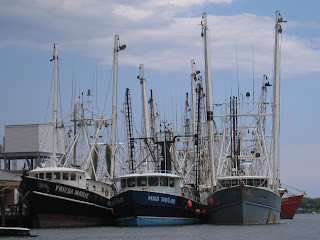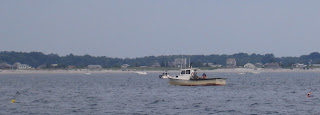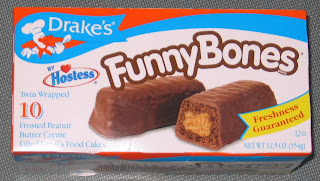
Cape May is a bay length and a world away from Salem, New Jersey. Cape May is one of the oldest beach resorts in this area, and it’s full of beautiful Victorian homes, many of which are available as vacation rentals or B&Bs. There are also old hotels and inns that are throwbacks to earlier times. We stayed here several days, exploring the town by foot, and the creeks behind the town by dinghy.

We treated ourselves to dinner at The Lobster House, near the commercial docks. Lots of large (~80’) fishing boats berth here, and we were told that this is a big scallop-harvesting area, so we had scallops at dinner—delicious. Also timely, because the day we left Cape May, we heard an announcement on the NOAA weather radio that the scallop season was to be closed, so we got them in the nick of time.
If you were relocating to Cape May and looking to buy a home, there’s quite a variety of styles, which made sightseeing really interesting. There were the

formal Victorian houses,

eclectic waterside houses,

close-to-nature marsh houses, and, of course,

roughing it on a pole.

















